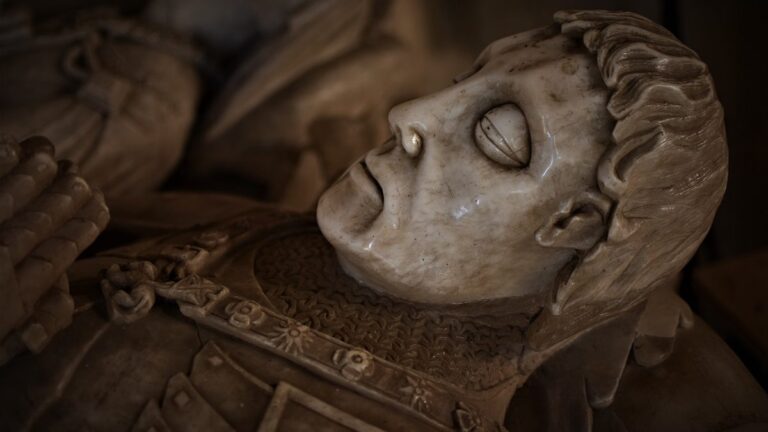I wrote about following Wyclif’s footsteps in modern Oxford in 2014 in Walking round Wyclif's Oxford
Tuesday, 31 December 2024
John Wyclif 640
Monday, 30 December 2024
The Battle of Wakefield

Friday, 27 December 2024
St John the Evangelist

Thursday, 26 December 2024
Celebrating St Stephen in the Ambrosian Rite
St Stephen
A damaged, but still charming, late medieval English depiction of St Stephen from the rood screen in the rural church at Hempstead in north Norfolk can be seen on Flickr Hempstead screen: St Stephen | St Andrew, Hempstead, Norfolk
Tuesday, 24 December 2024
Christmas 2024

Saturday, 21 December 2024
Friends in high places
Thursday, 19 December 2024
The Coronation of King Henry II and Queen Eleanor in 1154

She was Duchess of Aquitaine in her own right, and nine years older than the twenty one year old.King. Her previous marriage to King Louis VII of France was annulled early in 1152 and eight weeks later she married the nineteen year old Henry, Having campaigned as a teenager in England he was already established as Duke of Normandy and the next year by treaty was recognised as heir to King Stephen. The rather unexpected death of the latter in October 1154 brought this determined and energetic couple to the English throne.
The coronation was carried out by the Archbishop of Canterbury, Theobald of Bec.
The new King was crowned with one of the crowns that had belonged to his mother’s first husband the Emperor Henry V, and which she had brought to England as his widow.
The outward ceremonial of kingship appears to have mattered little to King Henry. After a few recorded ‘crown-wearings’ on July 17th 1157, or at Easter the following year - authorities vary - he and Queen Eleanor laid their crowns on the altar of Worcester Cathedral or the shrine of St Willian and swore not to wear them again.
Little survives of the Westminster that saw that coronation day beyond some of the claustral buildings of the abbey and the shell of Westminster Hall, which was the work of King William II. In 1154 the new King and Queen moved on to celebrate their Christmas Court at Bermondsey Abbey across the Thames rather than at Westminster.
He was slow in settling the business of subjects, whence it happened that many, before their affairs were settled, died or departed from him dejected and empty-handed under the compulsion of want. It was another of his faults that, whenever he was lounging, which happened rarely, he never allowed approach to him, in answer to the prayers of the good, but, remaining in inner chambers tightly closed, he was accessible to those only who seemed unworthy of such access. His third fault was that he was impatient of peace, and felt no qualm in harassing almost the half of Christendom. In these three was his sin; in regard to the rest he was strikingly good, and in all respects lovable, for no one ever surpassed him in gentleness and affability.
Whenever he went forth, he was caught up by the crowd, carried from place to place and forced to go where he desired not; and, what is remarkable, he gave ear patiently to individuals, and even when assaulted, now by general cries, now by violent hauls and pushes, to none on this account did he bring disgrace or make it serve as a pretext for his anger. And when he was too sorely tried he held his peace and fled to spots of peace. He was never haughty or puffed up; he was sober and restrained and pious, loyal and far-seeing, generous and often victorious, and a doer of honour to the good.

Wednesday, 18 December 2024
A contemporary letter describing the death of Nelson
Tuesday, 17 December 2024
A monumental hangover?

Sunday, 15 December 2024
The not so Poor Clares of Cologne
Friday, 13 December 2024
The Crown of Thorns returns to Notre-Dame
A portrait of Emperor Constantine XI is discovered
Wednesday, 11 December 2024
Medieval French Society
Tuesday, 10 December 2024
Tales from the medieval Oxford and London Coroner’s Rolls
Sunday, 8 December 2024
An important source for Scottish history goes to St Andrews
Pope Adrian IV






